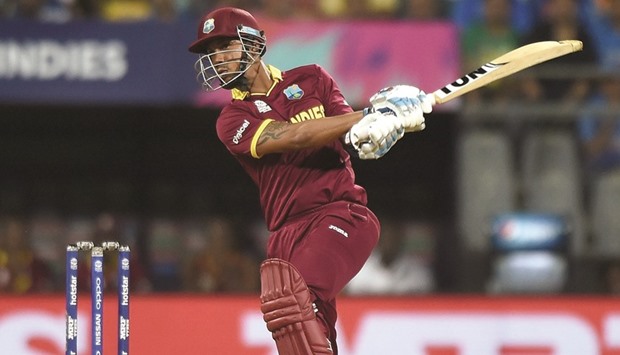Ah, the dot ball. With only 120 legal deliveries in a Twenty20 innings, the value of the dot has risen enough to command its own column on modern-day scorecards. The majority of short-form batting coaches across the world agree on one thing: there is no excuse for letting them happen. The team analysts, by and large, agree.
However, West Indies have taken conventional wisdom and smashed it to bits. They have faced the highest percentage of dot balls of the teams in the Super-10 stage of the World T20 -- a rather staggering 45.4%. Including the semi-final against India, they have failed to score off 259 balls across five matches. But what they cede in dots, they more than make up in fours and sixes. Against India, their scoreless 47 balls were put into perspective by 146 of their 190 runs off the bat coming in boundaries. A target of 192 was made to look 20 short.
It is tempting to delve into this and ask whether this is a calculated flip of the common consensus. But it is just a West Indies team playing to their strengths. They are a side packed with hitters, not the busybody types who want to push the field hard and find cute segues to the fence. Hit the ball hard and hit the ball far. That is about it.
Every one of the top nine to face India had a strike rate above 100 in international T20s. Marlon Samuels strikes at 120, Andre Russell at 130 and Chris Gayle and Darren Sammy hit into the late 140s.
Yet, at this World T20, only five players have really been able to flex their muscles. Gayle eviscerated England in the opening group match with 100 off 48, Andre Fletcher blitzed 84 off 64 versus Sri Lanka before his injury replacement, Lendl Simmons, silenced India with 89 from 47, aided initially by a brisk 52 from Johnson Charles. Russell has dipped in twice, with finishing cameos of 43 off 20 in the semifinal and a quick eight-ball thrash for 20 against Sri Lanka. He has been undefeated in three successful chases at this tournament.
The hero of the 2012 World T20 final Marlon Samuels , who smashed 78 off 56 to sink Sri Lanka, has been relatively subdued. So too Dwayne Bravo and Darren Sammy, who have only had three and two innings respectively. Against India, West Indies had Bravo, Sammy, Denesh Ramdin and Carlos Brathwaite still to bat. They were not needed as Russell finished things with his fourth six.
“England will be aware we are not a one-man team,” said Simmons after the match. “Every one of our players are match-winners. And with the batting that we have I think any total that anyone makes we can chase it. We always back ourselves to chase totals.”
The issue for England is that this is not simply a West Indies side that bats deep - it is one that can take you apart from every scenario. In the powerplay, through the middle overs and at the death. In fact, as you go down the batting order, you will notice that time needed for the next batsman to play himself in gets shorter and shorter. That adaptability extends to their work in the field, too, with a legitimate case to be made for classifying Gayle, Russell, Bravo, Sammy and Brathwaite as all-rounders - both full- and part-time - based on their work in this tournament.
In a format where the aim is to hit every ball for six, theirs is as close to a Cyborg XI as there is in world cricket. Dot balls might build pressure but West Indies know that boundaries finish teams off.

File photo of West Indies batsman Lendl Simmons playing a shot during the semi-final match against India at The Wankhede Stadium in Mumbai on March 31.
